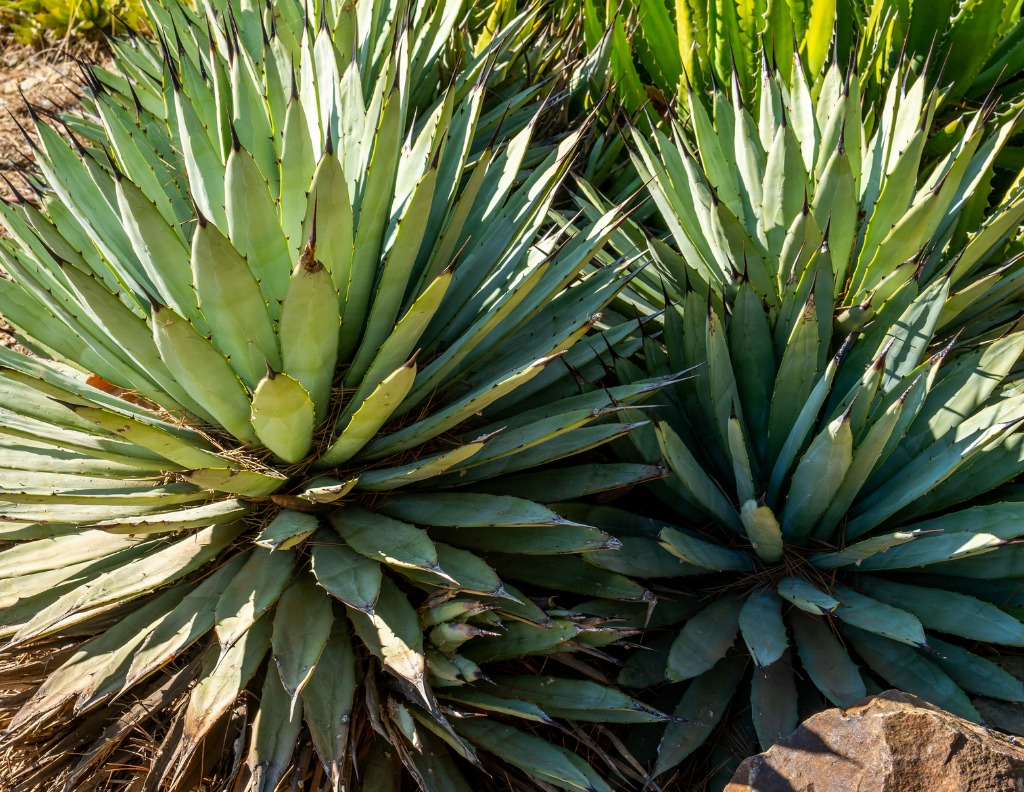Black-spined Agave
(Agave macroacantha)

Description
Agave macroacantha, the black-spined agave or large-thorned agave, is a species of succulent flowering plant in the family Asparagaceae naturally occurring in Oaxaca and also near the town of Tehuacan in the State of Puebla, Mexico. Agave macroacantha produces a medium-sized leaf rosette that can be basal or can grow on a very short stem. Leaves are succulent, greyish green and up to 1.8 feet long at a maximum, ending in sharp black spines that are up to 1.2 inches long at the tips. Flowers are small, grey and red, growing in bunches on sturdy stems of up to 3 m (10 feet) in height. The plant prefers a dry, sunny and hot location for summer and from early autumn onwards a cooler, well-lit space. It likes regular watering in summer and only minimum watering in winter, and will fare well in a large pot with sparse, gravelly soil. In the UK this plant has gained the Royal Horticultural Society’s Award of Garden Merit. Agave is a genus of monocots native to the hot and arid regions of the Americas, although some Agave species are also native to tropical areas of South America. The genus Agave (from the Ancient Greek αγαυή, agauê) is primarily known for its succulent and xerophytic species that typically form large rosettes of strong, fleshy leaves. Agave now includes species formerly placed in a number of other genera, such as Manfreda, ×Mangave, Polianthes and Prochnyanthes. Many plants in this genus may be considered perennial, because they require several to many years to mature and flower. However, most Agave species are more accurately described as monocarpic rosettes or multiannuals, since each individual rosette flowers only once and then dies; a small number of Agave species are polycarpic. Maguey flowers are considered edible in many indigenous culinary traditions of Mesoamerica. Along with plants from the closely related genera Yucca, Hesperoyucca, and Hesperaloe, various Agave species are popular ornamental plants in hot, dry climates, as they require very little supplemental water to survive. Most Agave species grow very slowly. Some Agave species are known by the common name "century plant". The succulent leaves of most Agave species have sharp marginal teeth, an extremely sharp terminal spine, and are very fibrous inside. The stout stem is usually extremely short, which may make the plant appear as though it is stemless.
Taxonomic tree:







